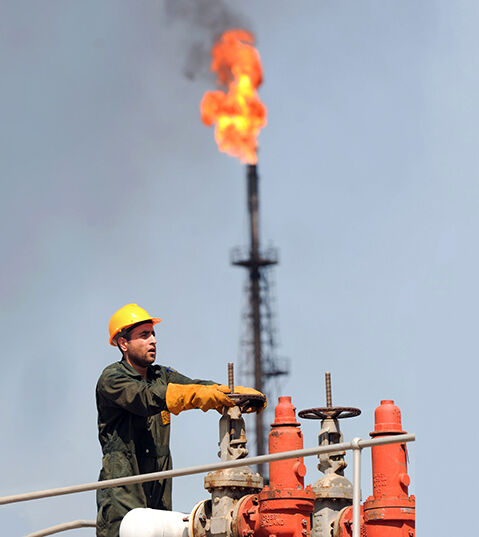NISOC, running 45 fields and 65 hydrocarbon reservoirs of various sizes, covers more than 70,000 square kilometers extending from Bushehr to Khuzestan provinces. NISOC accounts for about 75% of Iran’s crude oil output and 16% of national gas production. Such massive fields as Ahvaz, Gachsaran, Maroun, Aghajari, Karanj, Parsi, and Bibi Hakimieh lie in this area. NISOC’s current oil production capacity is 2.94 mb/d, which is set to reach 2.97 mb/d by March 2024.
PGC up
Chief among the key upstream activities of NISOC’s Directorate of Technical Affairs is to determine planned guide capacity (PGC) for various fields. PGC figures set the basis for all production plans. To determine PGC data for oil reservoirs, a variety of petrophysical, geological, production engineering, and reservoir engineering activities have been carried out. The figures are determined based on the performance of reservoirs and the simulation of production potential.
The enhanced output plan for the current calendar year envisages enhancing the production capacity by about 30 tb/d year-on-year. To that end, new development wells would account for 58 tb/d, workover wells for 143 tb/d, and restored wells for 257 tb/d.
Key obligations
NISOC’s five-year production plan envisages bringing output potential from 2.933 mb/d in March 2022 to 3.28 tb/d. One of the key obligations for adding another 350 tb/d to NISOC’s output capacity over five years is to drill more than 300 development wells, conduct workover on 550 wells, and perform more than 3,350 restoration operations.
Production plans are the result of enhanced production activities and output decline. Key factors involved in production fall from a hydrocarbon reservoir may be divided into surface and underground factors. As far as surface factors are concerned, decrepit installations, defective equipment, and the necessity of building new units like desalination units may be cited. Reservoirs see their pressure fall as long as production continues as the oil column becomes thinner. That would cut and even stop oil production from wells, which would in turn affect reservoir output. This decline depends on a variety of factors including depletion percentage and production mechanisms. The level of production decline differs from one field to another. The average is 350 to 400 tb/d.
Of course, due to the obligation for production cuts in recent years, such a decline should be revised in maximum output. Therefore, in assessing one-year production performance, in case 20 tb/d is reported to have increased, the annual activities have been such that in addition to the annual decline of 350-400 tb/d, 20 tb/d has been added to the output. The bulk of NISOC’s enhanced output has been realized by restoration activities, in which coiled tubing is used to bring wells back to production. Therefore, procurement of drilling rigs and coiled tubing is essential for the production plan.
Since last calendar year, 6 agreements have been signed for using 18 coiled tubing systems owned by the private sector. All restoration work conducted by the coiled tubing, as well as those owned by the National Iranian Drilling Company (NIDC) amounts to 375 tb/d. Last calendar year, 400 tb/d of oil was forecast to be added to NISOC’s output, versus 330 tb/d decline. However, it was partly not realized due to the problems with mounting drilling rigs, unprepared commodities and drilling materials, and inactive wells.
Recovery rate at 28%
The rate of oil recovery from NISOC’s reservoirs currently stands at 28%, which is a modest figure. We have some reservoirs with about 60% recovery. The rate of recovery from reservoirs depends on a variety of factors, including reservoir rock, reservoir fluid, and production mechanisms. For instance, the Ahvaz Asmari recovery rate is estimated at 57% while it is below 20% for Ahvaz Bangestan which is deeper underground.
Ahvaz Bangestan is the largest reservoir of Bangestan. With more than 37 billion barrels of oil in place, it is a candidate for pilot water injection. Many activities have so far been done in this regard and the pilot water injection project is expected to become operational next calendar year. Water injection is forecast to double the rate of recovery. In case this water injection proves successful, it will be repeated in other parts of the reservoir. Then, it may apply to all other reservoirs of Bangestan, which would significantly boost the volume of recoverable reserves.
Iran Petroleum


Your Comment